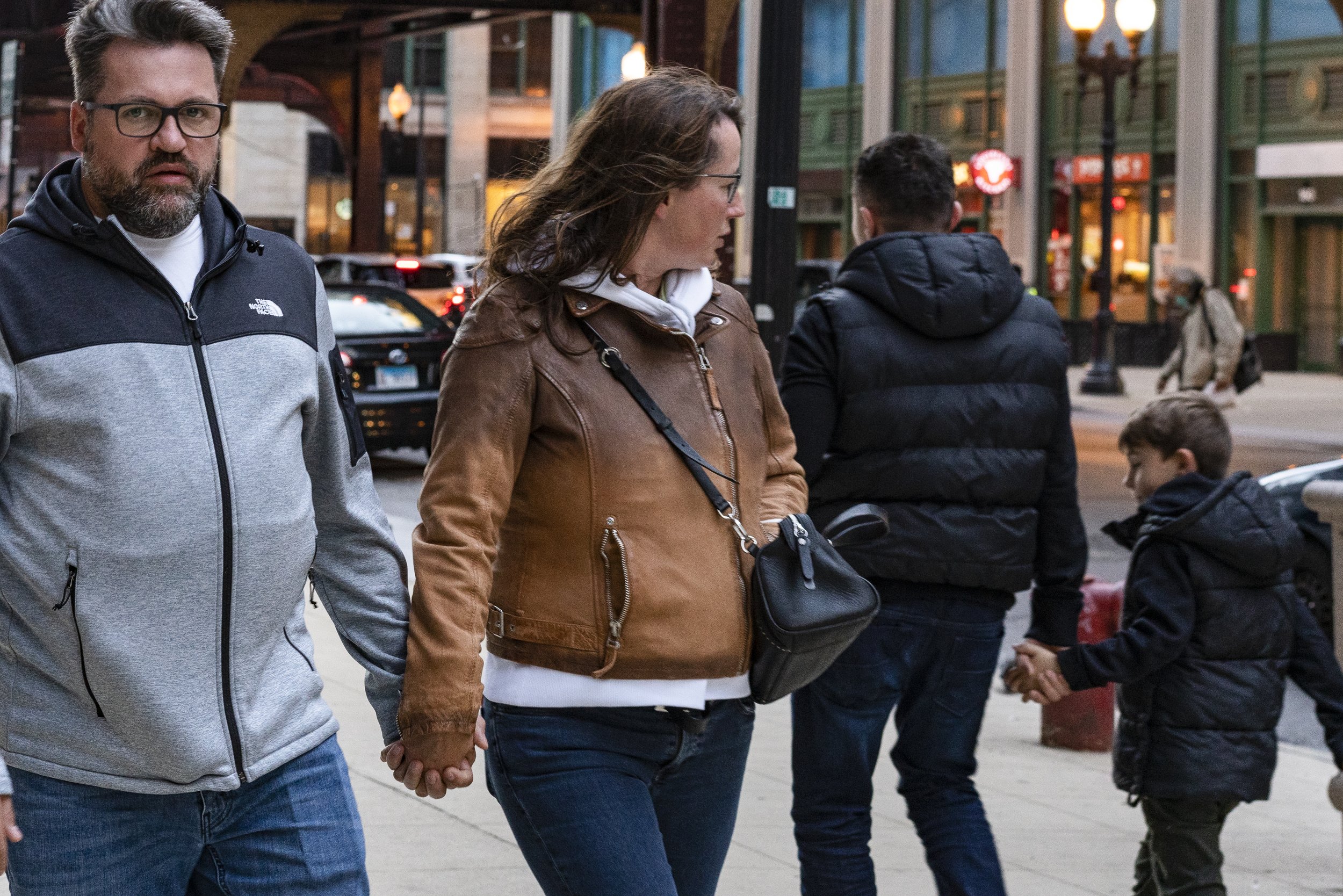
Fat Shadows and Molded Memories
It The greatest challenge I’ve faced in this project has been confronting my own anxiety and resistance to vulnerability. I set out to capture the stares I receive as a fat woman, giving others a glimpse into an experience they may never face unless they, too, are a fat woman or female-presenting fat person. My goal isn’t to evoke pity or fuel anger towards those in the photographs, but rather to reveal what it feels like to be seen the way I, and many other fat women, have been seen.
This project challenges not only the assumptions people hold about me as a fat person, but also invites reflection on their own biases rooted in anti-fatness. It's easy to think anti-fat attitudes come only from strangers, but they can also come from loved ones—family, friends, and even ourselves.
I’ve included childhood photos of myself because, by the age of eight, I had already learned that being fat was "bad." I hated my appearance and avoided photos. At that age, my mom put me on my first diet, without my consent. When I looked at these childhood photos for the project, I felt heartbroken. I wasn’t the “monster” I had imagined myself to be. I wasn’t huge—I was a healthy child, just not as thin as my siblings. By eight years old, I already felt inhuman.
The project reflects on the harmful comments made by friends and family, the ones that gave me body issues, made me feel like I shouldn’t eat, and convinced me my body was an unlovable problem. These words, which I never forgot, would echo in my mind whenever I saw my reflection or ate. I’ve included them in the project, alongside images of my younger self and the judgmental stares from strangers today.
This work is deeply personal—it's about healing my inner child, the little girl who believed she wasn’t beautiful or lovable because of her body. There was never anything wrong with my body; I am healthy, and I am lovable.
One of the key elements of this project is the use of mirrors. The mirrors invite others to reflect on their own experiences with anti-fatness—whether they’ve been on the receiving end, perpetuated it, or both. It’s about encouraging self-reflection.
The project isn’t arranged in a linear or chronological order. It exists in the present because these experiences are happening now. I am still that little girl. I still hear those words. I still struggle with my self-image, and people continue to stare at me with disgust.
As I reflect on my past, I remember that I even joined the yearbook committee just so I could remove my photo because I hated how I looked. When I did take pictures of myself, they were always from a specific angle, never showing my body, and usually with a filter that altered my appearance. Any other photos of me were taken without my consent, often by a family member who captured the worst images of me.
This project is my way of reclaiming my story and my body, allowing myself—and others—the space to reflect, heal, and grow.

















